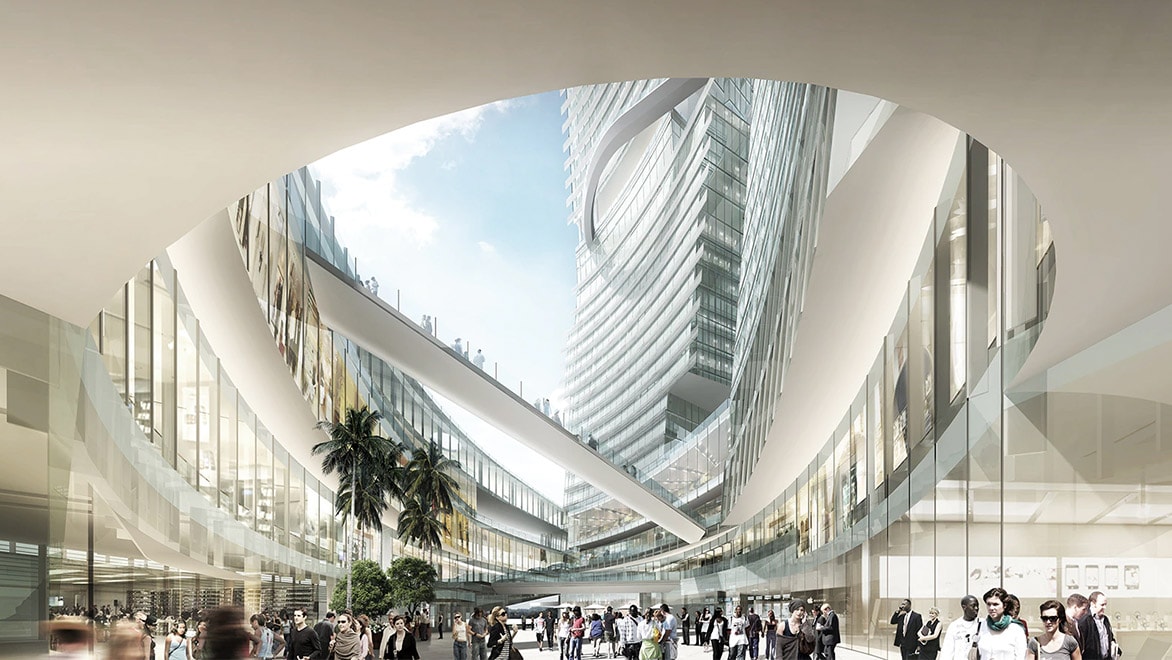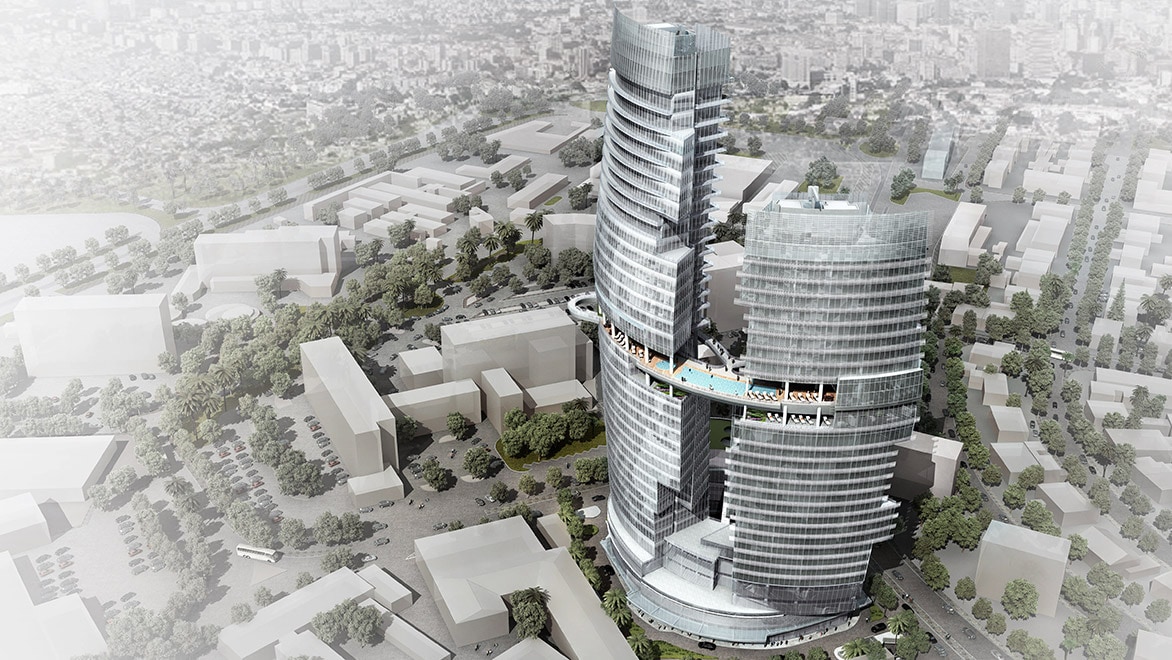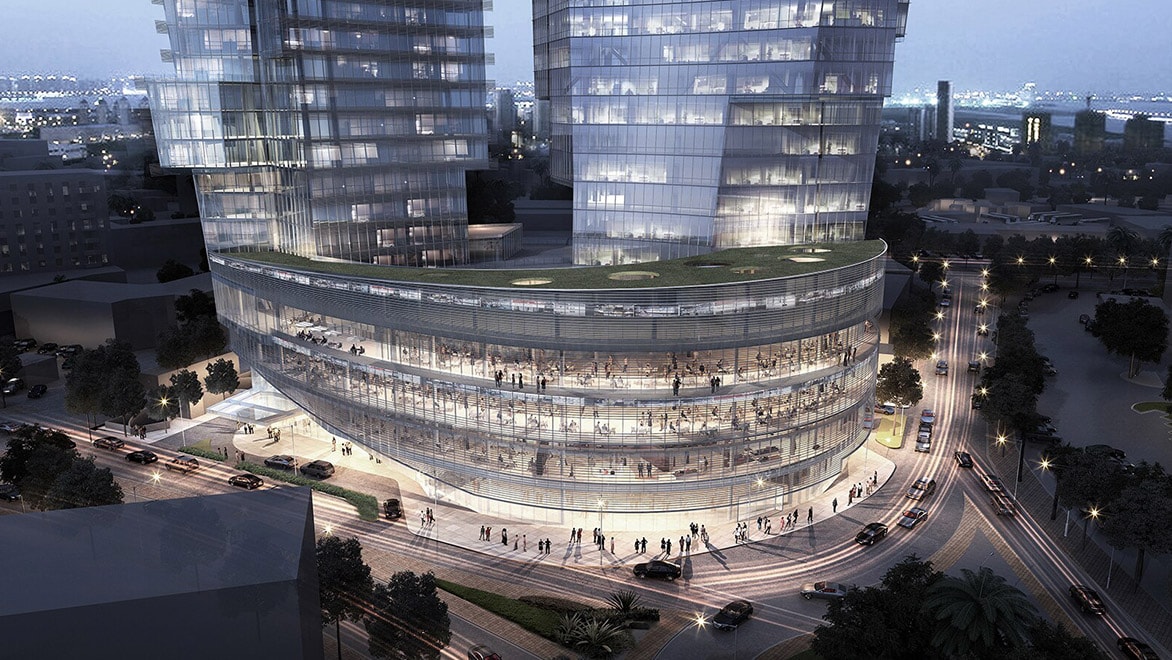LERA
How LERA is reducing redundant work to make way for inspired problem solving
CUSTOMER SUCCESS STORY
Share this story
Design optioneering, including computational design and streamlined workflows, freed Lera's engineers to focus on new possibilities
LERA Consulting Structural Engineers, a mid-sized firm based in New York City, is using design optioneerng, including computational design and streamlined workflows, to reduce redundant work tasks and free their engineers to focus on what matters most. The results have been transformative firm-wide.
Investment in computational and integrated workflows proves successful
LERA is a New York-based group of consulting engineers best known for designing tall buildings: one of its first projects was the former World Trade Center towers.
Today the workflow it uses to design these tall buildings is almost unrecognizable from just five years ago. LERA’s smart use of computational design technology and more integrated engineering workflows, is allowing this mid-sized firm to optimize its design process, enable greater innovation and extend its capabilities as a firm.
Alfonso Oliva, Director of LERA+ (LERA’s Laboratory for Engineering Research and Automation), explains that it all comes down to their focus on computational and generative design, which he says serves “as an inspiration for innovation in the design process.”
The results have been impressive: “The advancements we’ve made are huge, and the benefit has been clear at every single level from the engineer, all the way up to the partnership. Making a small change has had such an impact,” says Oliva.

Image courtesy of LERA
How they do it
While designers have historically relied on their own knowledge to solve design problems, computational design uses computer firepower, such as artificial intelligence, to help automate the design process. LERA moved gradually into this way of working.
First, the firm changed the way its 3D models were created, making it easier to move between the different software environments. But the real benefit of this became apparent when LERA began to add in analysis results automatically.
“We work with a lot of Autodesk products, but Autodesk® Revit®is the core,” says Oliva. “We started adding analysis results into our Revit model automatically from products like SAP2000® and ETABS®, for instance, tagging Revit values for the shear,” he explains. “And all of a sudden we can automatically feed all this information in there and the engineers have an easier way to design that feeds back into Revit for drawing production.”
With its design and analysis now closely integrated, LERA can focus more of its time on developing the best design possible, and delivering more value to the client.

Image courtesy of LERA
“The benefit [of computational design] has been clear at every single level – from the engineer, all the way up to the partnership”
—Alfonso Oliva, Director, LERA
Freeing engineers to innovate
Oliva attributes LERA’s foray into computational design both to his own personal frustrations as a young engineer, but also to the firm’s commitment to the happiness of its employees.
He explains that for him, repetitive tasks were taking him away from true engineering and sucking the joy out of his role. “I started automating these tasks,” he explains, “to give people the ability to actually perform the job they were hired for. People realize the benefit when they click the button and that task that was taking five hours, all of a sudden it takes a few seconds.”
Nidhi Sekhar, Senior Computational Designer at LERA+, works alongside Oliva to take the company’s computational design to the next level. “When you reduce the redundant work, you’re giving people more time to do what they really like doing.” She says that this not only makes employees happier, but also makes their work more interesting which in turn increases work quality and makes you more innovative as a company.

Image courtesy of LERA
“That task that was taking five hours, all of a sudden it takes a few seconds.”
—Alfonso Oliva, Director, LERA
Combating contracted schedules
Thanks to BIM, the advances in the industry over the last ten years have allowed firms like LERA to do things faster.
But the flipside is that there’s now an expectation to deliver faster too. The architects LERA works with have caught on to the fact that engineers can deliver work faster and have started to ask them to deliver work in half the time. LERA’s move towards integrated engineering workflows is the firm’s way of responding to this new pressure.
While computational design is helping LERA’s engineers get to the best engineering solution faster, automating tasks using Autodesk® Dynamo is helping them save time. LERA’s BIM department works in Dynamo to move engineering data into Revit.
Oliva says, “It’s a huge time saving compared to if you had to do this by hand. These kinds of things can get the engineers more into Revit and it’s definitely happening at LERA.”

Image courtesy of LERA
“It gives you more time to do the things that matter.”
—Nidhi Sekha, Senior Computational Designer, LERA
Precise information for an optimal solution
But for LERA, the key benefit of its integrated approach to engineering is that it brings its approximations incredibly close to reality and dramatically increases the precision of the information the firm has to work with, and as a result, the quality of work it produces.
For Oliva, this is a big step forward compared to how engineering used to be done.
Engineers would have had to approximate in order to do their analysis for curves and other unusual designs. Now, thanks to the ability to run engineering analysis on the Revit model, LERA can approximate in a way that’s incredibly close to reality and increase the precision of the information even when they’re working with computationally designed “funky geometry”, as Oliva puts it.
Sekhar takes it further, explaining that another benefit of having accurate engineering data in the model is that it allows LERA’s engineers to spend a lot more time exploring design options. She says, “We’re not just looking at one answer and then taking that forward, we are actually trying to optimize our design early on. Instead of just providing a solution, now we try to provide an optimal solution.”

Image courtesy of LERA
“Instead of just providing a solution, now we try to provide an optimal solution.”
—Nidhi Sekhar, Senior Computational Designer, LERA
LERA’s vision for the future
When Oliva speaks about the future, it’s clear that he’s most excited to see how the leap that LERA has made in design will benefit the rest of the build process. “What we would like to do and what makes sense to us, after working for so many years on software development, we’d like to go downstream of the design process into digital fabrication.
This means integrating our design processes into digital fabrication and really pushing the boundaries around what can be built using the power of our optimization techniques and fabrication skills.”
In the more immediate future, Oliva believes that optimizing buildings will be critical, sharing that they’re already seeing the benefits of their efforts extend beyond the engineering design process, “Our optimization processes saves money not only in the engineering phase but also all the way down to fabrication.”
“Making a small change has had such an impact”
—Alfonso Oliva, Director, LERA